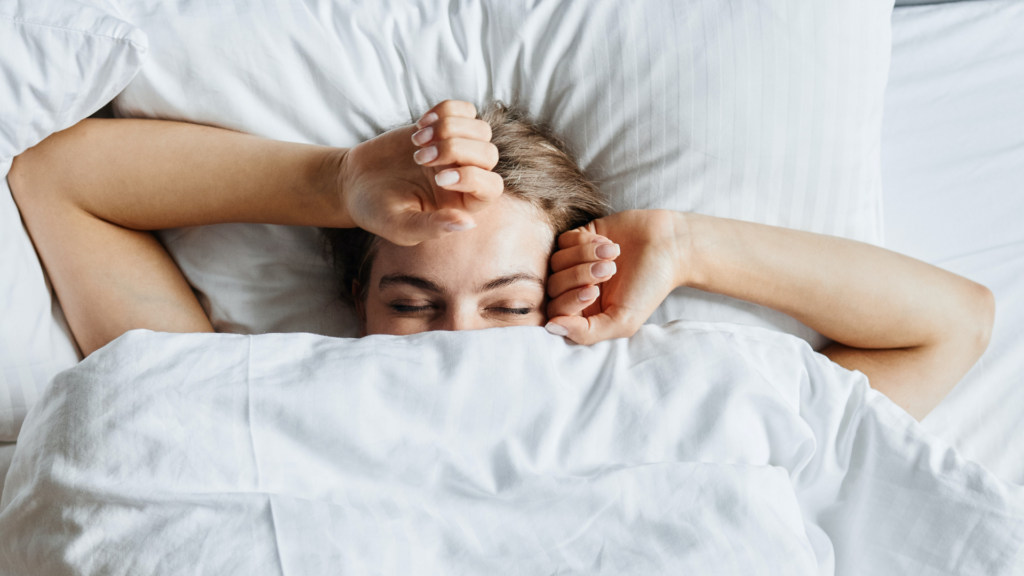
Did you know adding a few “Zzz’s” to your afternoon routine can be a powerful way to boost mental alertness and overall performance? That’s right! Napping doesn’t just need to be for pets or small children because there are benefits to napping for everyone. If you’re considering adding an extra nap to your routine, here are a few things to keep in mind.
How long should a typical adult nap last?
As you may know, when we sleep at night we go through various stages of sleep. During this sleep cycle, the lightest stage of sleep happens within the first 5 minutes and the deepest stage of sleep occurs at around 30 minutes.1 The optimal nap time falls right in between these two stages, ideally around 10-20 minutes. This helps provide your body with enough sleep to feel the benefits of a nap, but ends the nap before you fall into the deepest stage of sleep. Naps lasting 30 minutes or longer can be difficult to wake from and leave you feeling groggy afterwards.2
What is the best time of day for a nap?
The mid-point of the day seems to be the optimal time for a nap. This typically falls between 12:30pm-2:00pm for most people. Note that napping later than 3:00-4:00pm can interfere with nighttime sleep and leave you feeling less rested, overall.3
What are caffeine naps?
Caffeine naps are a strategy utilized by night shift workers, airline pilots and even astronauts. They work by consuming caffeine (like a cup of coffee or a serving of Spark®) just prior to taking a nap. It may seem counter intuitive, but, since caffeine typically takes around 20 minutes to take its full effect, this process can help you feel more alert and refreshed than just a nap or caffeine alone. 4 The trick with this strategy is that the caffeine does need to be consumed rather quickly before taking a nap in order to allow a full 20 minutes before it takes effect.
Are there different types of naps?
According to the Sleep Foundation naps can fall into one of five categories, depending on the need that they serve:
- Recovery Nap: these take place the day after a sleep deficit.
- Prophylactic Nap: these are taken in preparation for loss of sleep.
- Appetitive Nap: simply taken for the pleasure of sleep.
- Fulfillment Nap: for those who have greater sleep needs, like small children.
- Essential Nap: that extra sleep needed when you’re sick. For these types of naps, it’s important to listen to your body and take the extra rest necessary to help aid your body in recovery.
Looking for more ways to help your sleep hygiene? Check out our post here on 5 Tips to Improve Sleep Quality!
REFERENCES
1 Patel AK, Reddy V, Araujo JF. Physiology, Sleep Stages. (Updated 2021 Apr 22). In: StatPearls (Internet). Treasure Island (FL): StatPearls Publishing; 2022 Jan. Retrieved February 24, 2022 from: https://www.ncbi.nlm.nih.gov/books/NBK526132
2 Napping: Health Benefits & Tips for your best nap. Sleep Foundation. (2022, January 20). Retrieved February 24, 2022, from https://www.sleepfoundation.org/sleep-hygiene/napping
3 Hoffman, A. (2021, March 23). What is the best Nap Time? Sleep.org. Retrieved February 24, 2022, from https://www.sleep.org/sleep-questions/whats-the-best-time-of-the-day-to-nap
4 Bonnet, M. H., & Arand, D. L. (1994). The use of prophylactic naps and caffeine to maintain performance during a continuous operation. Ergonomics, 37(6), 1009–1020. Retrieved February 24, 2022 from https://doi.org/10.1080/00140139408963714




